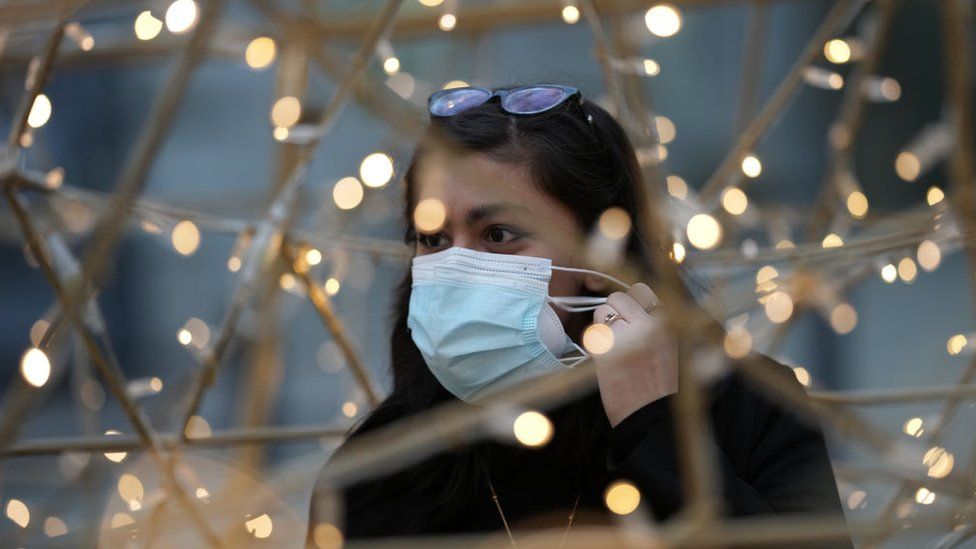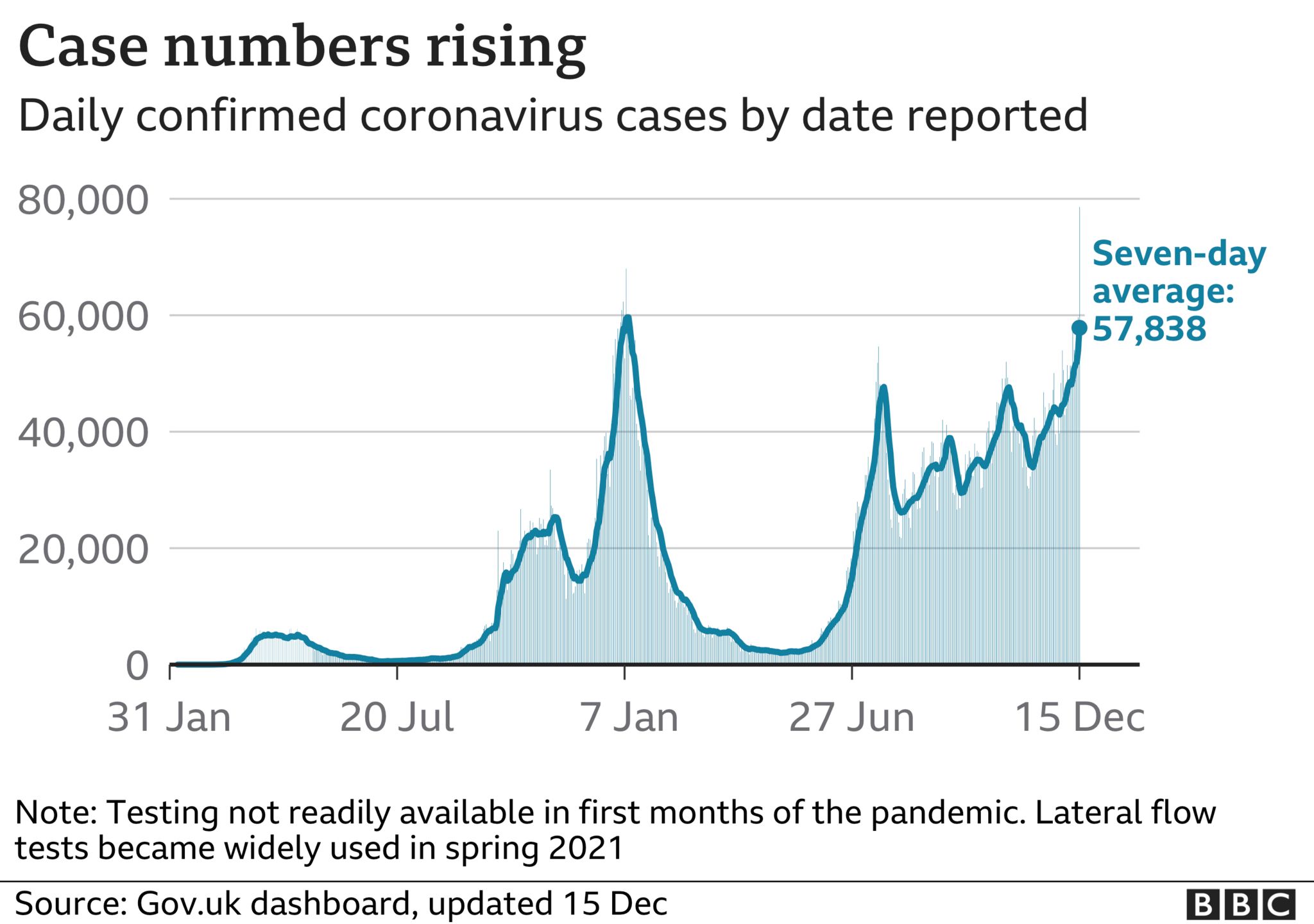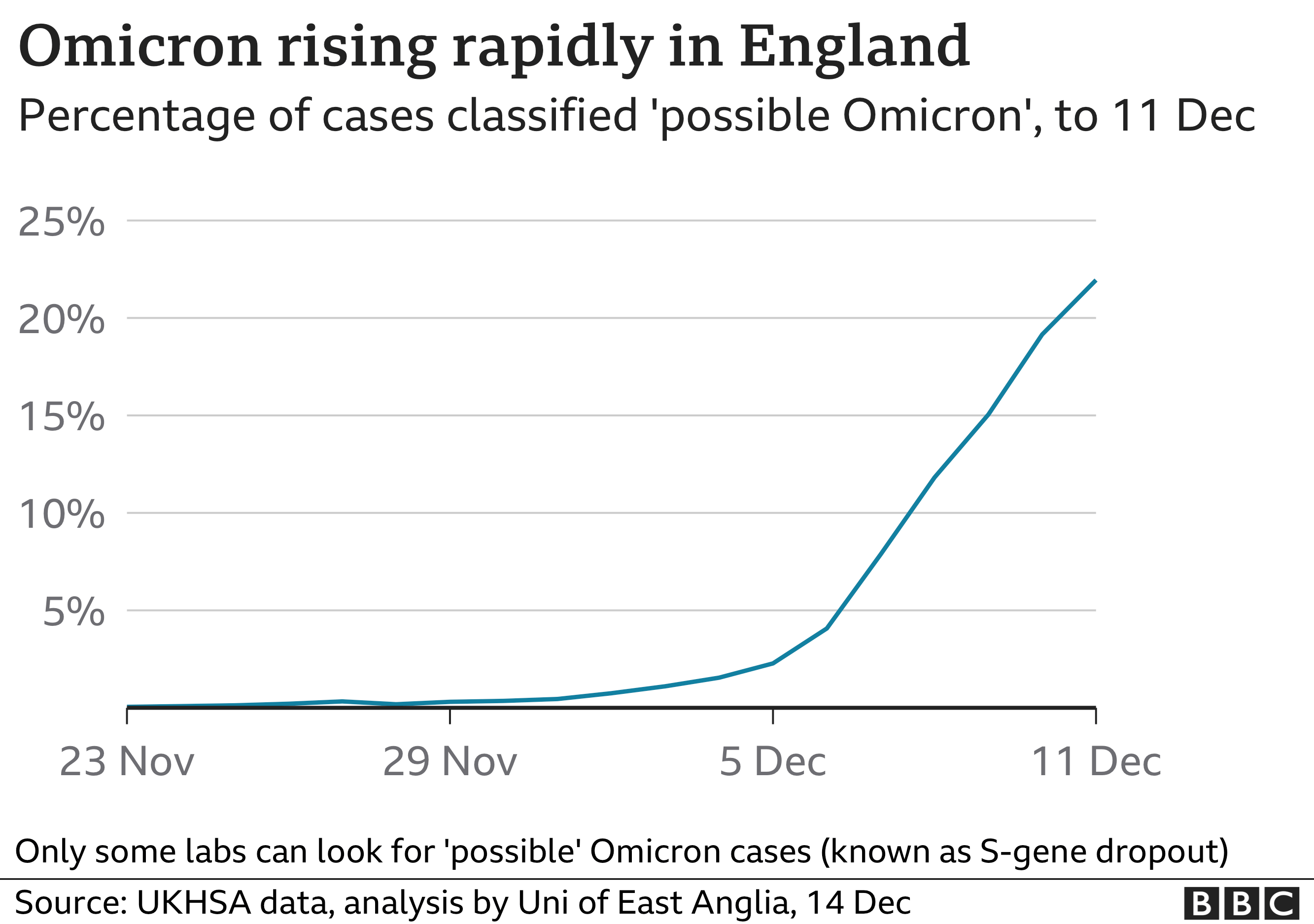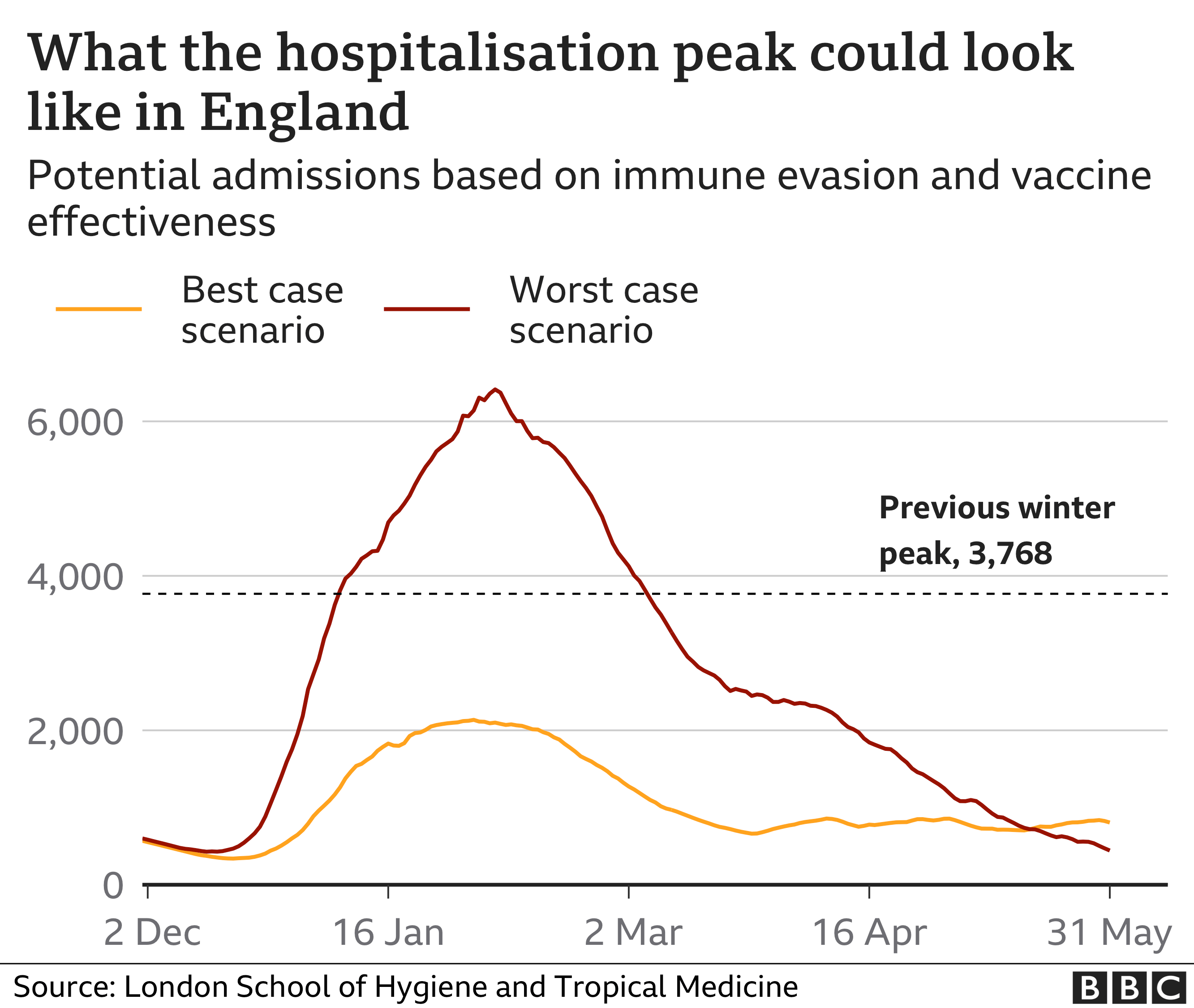
The UK has reported its highest number of daily infections since the pandemic began, and England's chief medical officer has warned that more Covid records will be broken.
Speaking at a Downing Street news briefing, Prof Chris Whitty said the Omicron variant was moving at a phenomenal pace and that case numbers would continue to hit new highs over the coming weeks.
In that case, infections will reach a level that will exceed testing capacity. So why is it happening and what does it mean for the NHS? Here are three takeaways from a record day.
1. We're seeing two epidemics at once

Omicron is spreading rapidly, but Delta is not disappearing. It means we have two variants circulating together. It is still early days, but it does appear to be different from what we have seen before when Alpha wiped out the original variant circulating in the UK and was then itself displaced by Delta.
This is likely to be because Omicron is able to get past some of the body's defences built up by vaccination and previous infection. The two variants are not competing for the same people.
It means at the moment we have a fairly stable number of cases of Delta - as we have had pretty much since the summer.
But Omicron cases are rising rapidly and driving the overall number of cases up. Latest data suggests about a quarter of cases are Omicron - that would mean around 20,000 of Wednesday's reported 79,000 cases have been caused by the new variant.
It is quite possible these two variants will circulate together for a while, although the expectation is that Omicron will eventually displace Delta given how much immunity vaccination and our high levels of infection give against that variant.
2. Infections are rising at break-neck speed

Health officials have been saying for days that we should expect cases to surge.
And these are just the ones that come forward for testing - the true level of infections will be much higher.
Omicron cases are rising rapidly, probably now doubling every two days, so it was only a matter of time before a new high was set - although the lack of testing at the start of the pandemic means comparisons with that wave are difficult.
Expect new records to be set day after day as these numbers are only going to go up from here.
If the two-day doubling continues, by Christmas Day 640,000 Omicron infections would be being recorded and early in the new year the whole population will have been infected.
That said, the cases would never be spotted as testing capacity is limited to fewer than one million a day.
Clearly, however, that rate of growth will slow. There are already signs this has started happening in South Africa.
But not before we get to - in the words of UK Health Security chief Dr Jenny Harries - staggeringly high rates of infection.
3. The threat to the NHS is uncertain

What is not clear is what it means for serious illness.
There are suggestions Omicron is causing milder illness.
There is logic to that - reinfections or infections post vaccination are likely to be milder.
But if infections continue to rise as quickly as they are, that will push up hospital admissions.
Even if the severity of the virus is halved, as soon as the total number of infections double, hospitalisations will go up.
Left unchecked, with no extra restrictions than we have now, the peak will come quickly. How big it will be is uncertain.
Modelling from the London School of Hygiene and Tropical Medicine has suggested that in a best-case scenario hospital admissions in England could peak at just over 2,000. But in a worst-case scenario they could exceed 6,000.
To put that into context, last winter it topped out at 3,700 a day after lockdown was introduced.
Privately ministers accept that if the numbers go past 2,000 a day, with no sign of them levelling off, the NHS would be at real risk.
But it is also worth keeping an eye on the total numbers in hospital - the time patients spend in hospital with Covid has been falling.
That means the same level of admissions now will not equate to the same pressure it did earlier in the pandemic.

So why no restrictions then?
Clearly as cases go up there will be more and more pressure to introduce restrictions, perhaps even a full lockdown.
That is understandable. But it is also important to remember restrictions don't stop the epidemic - they just prolong it.
That can be used to buy time. Last winter the lockdown allowed the rollout of vaccines.
But with more than 80% of the most vulnerable boosted, the benefits of a lockdown are much lower this time.
The costs, however, are the same - perhaps greater considering what people have endured so far in terms of the harm to jobs, mental health and education.
What would change the equation significantly is if the NHS is going to be overwhelmed, which would deny people basic life-saving care.
Clearly the NHS is struggling, doctors are pointing out care is suffering, but the situation is very different from last winter when over a third of beds were occupied by Covid patients at one point. Today just 8% of beds are.
"day" - Google News
December 16, 2021 at 04:11AM
https://ift.tt/3253tHs
Covid-19: A record day for cases - what does it tell us? - BBC News
"day" - Google News
https://ift.tt/3f7h3fo
https://ift.tt/2VYSiKW
Bagikan Berita Ini















0 Response to "Covid-19: A record day for cases - what does it tell us? - BBC News"
Post a Comment